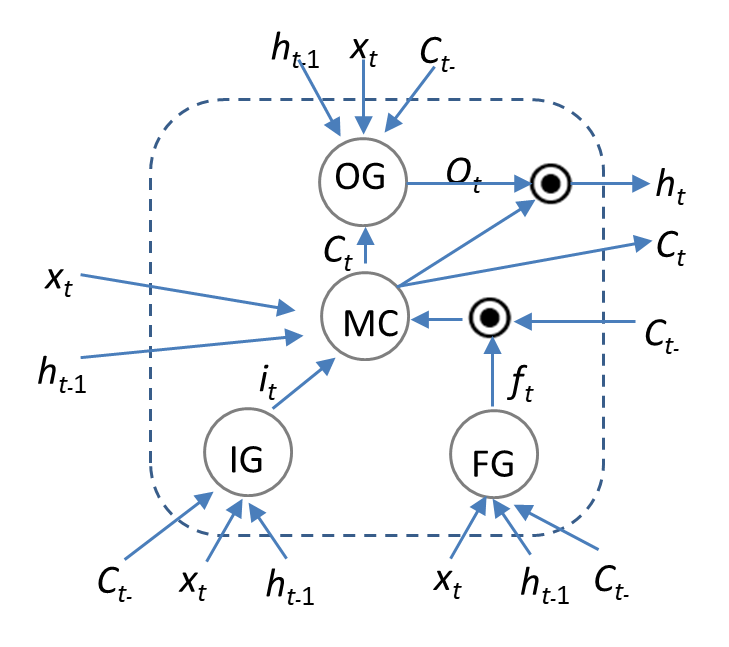Forecasting Energy Consumption from EV Station Charging Using RNN, LSTM and GRU Neural Network
DOI:
https://doi.org/10.69650/rast.2024.254636Keywords:
Electric Vehicle, Forecasting, Recurrent Neural Network , Long Short-Term Memory , Gated Recurrent UnitAbstract
The increase in electric vehicles (EVs) has resulted in a substantial escalation in electricity consumption. This increased demand puts more stress on the overall power system. The current study offers a method to predict energy usage patterns by looking closely at when electric vehicles typically need to charge during the day. After that, the collected data were used to create a predictive model using three different deep learning methods: Recurrent Neural Networks (RNNs), Long Short-Term Memory networks (LSTMs), and Gated Recurrent Units (GRUs). This study employs data pertaining to electric power consumption for EVs charging derived from Kamphaeng Phet Rajabhat University. The practical results show that the proposed model significantly outperforms in predicting power needs at the mentioned charging spots. This is evident in its precise prediction of the total power demands using the algorithm. Among the three types of deep learning structures studied, it's clear that the LSTMs type stands out as the best, achieving the most accurate results. This is supported by a Root Mean Square Error (RMSE) of 0.372 and a Mean Absolute Percentage Error (MAPE) of 11.508%. Additionally, the inquiry facilitates a comprehensive comparison between the dynamics of demand and the parameters of supply. This process yields data that offers valuable insights crucial for the strategic identification of potential electric vehicle charging stations. It also enables the prudent utilization of remaining electrical capacity derived from production processes. These combined efforts converge to ensure the utmost extraction of utility.
References
Gomez, J. C. and Morcos, M. M., Impact of EV battery chargers on the power quality of distribution systems. IEEE Power Engineering Review. 22(10) (2002), 63-63, doi: https://doi.org/10.1109/MPER.2002.4311766.
Deb, S., Tammi, K., Kalita, K. and Mahnta, P., Impact of Electric Vehicle Charging Station Load on Distribution Network. Energies. 11(1) (2018) 178, doi: https://doi.org/10.3390/en11010178.
Deng, Q., Feng, C., Wen, F., Tseng, C. L., Wang, L., Zou, B. and Zhang, X., Evaluation of Accommodation Capability for Electric Vehicles of a Distribution System Considering Coordinated Charging Strategies. Energies. 12(16) (2019) 3056, doi: https://doi.org/10.3390/en12163056.
Phuangpornpitak, N. and Prommee, W., A Study of Load Demand Forecasting Models in Electric Power System Operation and Planning, GMSARN International Journal, 10(1) (2016) 19-24.
Mushi, R. J., Boonraksa, T., Paudel, A. and Marungsri, B., Analysis of Line Instability in Microgrid by Applying Electrical Power Forecasting Approach. Journal of Renewable Energy and Smart Grid Technology. 16(2) (2021) 17-30.
Frikha, M., Taouli, K., Fakhfakh, A. and Derbel, F., Limitation of Deep-Learning Algorithm for Prediction of Power Consumption. Engineering Proceedings. 18 (2022) 26, doi: https://doi.org/10.3390/engproc2022018026.
Hwang, J., Suh, D. and Otto, Marc-Oliver. Forecasting Electricity Consumption in Commercial Buildings Using a Machine Learning Approach. Energies. 13(22) (2020) 5885, doi: https://doi.org/10.3390/en13225885.
Wan Muhammad, Z. W. Y., Fadhlan, H. K. Z. and Mohd, F. A. L., Prediction of energy consumption using recurrent neural networks (RNN) and nonlinear autoregressive neural network with external input (NARX). Indonesian Journal of Electrical Engineering and Computer Science. 17(3) (2020) 1215-1223, doi: http://doi.org/10.11591/ijeecs.v17.i3.pp1215-1223.
Shi, H., Xu, M. and Li, R., Deep Learning for Household Load Forecasting—A Novel Pooling Deep RNN. IEEE Transactions on Smart Grid. 9(5) (2018) 5271-5280, doi: https://doi.org/10.1109/TSG.2017.2686012.
Zheng, J., Xu, C., Zhang, Z. and Li, X., Electric load forecasting in smart grids using Long-Short-Term-Memory based Recurrent Neural Network. in 51st Annual Conference on Information Sciences and Systems (CISS). (2017) 1-6, doi: https://doi.org/10.1109/CISS.2017.7926112.
Sajjad, M., Khan, Z. A., Ullah, A., Hussain, T., Ullah, W., Lee, M. Y. and Baik, S. W., A Novel CNN-GRU-Based Hybrid Approach for Short-term Residential Load Forecasting. IEEE Access. 8 (2020) 143759 – 143768, doi: https://doi.org/10.1109/ACCESS.2020.3009537.
Himanish, S. D. and Roy, P. in Intelligent Speech Signal Processing: A Deep Dive Into Deep Learning Techniques for Solving Spoken Language Identification Problems, Ch. 5, Academic Press, (2019) 81-100, doi: https://doi.org/10.1016/C2018-0-03271-5.
Bianchi, F. M., Maiorino, E., Kampffmeyer, M. C., Rizzi, A. and Jenssen, R. An overview and comparative analysis of Recurrent Neural Networks for Short Term Load Forecasting. Springer Nature, 2017, doi: https://doi.org/10.1007/978-3-319-70338-1.
Guo, X., Zhao, Q., Wang, S., Shan, D. and Gong, W., A Short-Term Load Forecasting Model of LSTM Neural Network considering Demand Response. Complexity. (2021), doi: https://doi.org/10.1155/2021/5571539.
Chung, J., Gulcehre, C., Cho, K. and Bengio, Y. Empirical Evaluation of Gated Recurrent Neural Networks on Sequence Modeling. Cornell University., 2014, doi: https://doi.org/10.48550/arXiv.1412.3555.
Chang, M., Bae., S., Cha, G. and Yoo., J., (2021). Aggregated Electric Vehicle Fast-Charging Power Demand Analysis and Forecast Based on LSTM Neural Network, Sustainability. 13(24) (2021) 13783, doi: https://doi.org/10.3390/su132413783.
Mahjoub., S., Alaoui., L. C., Marhic., B. and Delahoche., L., Predicting Energy Consumption Using LSTM, Multi-Layer GRU and Drop-GRU Neural Networks. Sensors. 22(11) (2022) 4062, doi: https://doi.org/10.3390/s22114062.

Downloads
Published
How to Cite
Issue
Section
License
Copyright (c) 2024 School of Renewable Energy and Smart Grid Technology (SGtech)

This work is licensed under a Creative Commons Attribution-NonCommercial-NoDerivatives 4.0 International License.
All copyrights of the above manuscript, including rights to publish in any media, are transferred to the SGtech.
The authors retain the following rights;
1. All proprietary rights other than copyright.
2. Re-use of all or part of the above manuscript in their work.
3. Reproduction of the above manuscript for author’s personal use or for company/institution use provided that
(a) prior permission of SGtech is obtained,
(b) the source and SGtech copyright notice are indicated, and
(c) the copies are not offered for sale.








